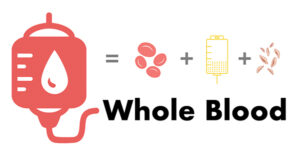Meet The ER in the Sky: HEALTHSTAR ONE
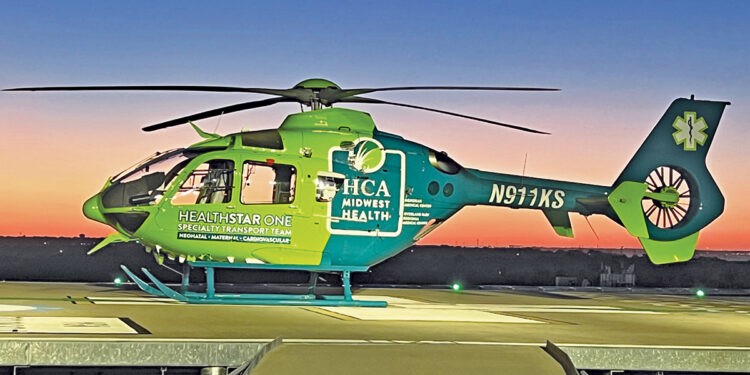
Story by Lynne Hayes
When someone’s life hangs in the balance after a stroke-cardiac event, serious trauma or a maternity crisis, every second it takes to get the right treatment within “the golden hour” is crucial.
In rural Kansas, where local medical centers aren’t typically equipped to handle critical emergencies, patients must be transported long distances to major hospitals for the treatment they need. Likewise, the Kansas City metro area has its own challenges getting patients to the right hospital for high-level care. In the city, the issue isn’t distance but traffic congestion that sometimes can impact response and travel times for ground ambulances.
In both instances, the answer is the same – look to the sky. That’s where you’ll find the HealthStar One, a twin-engine Airbus H135 helicopter that’s effectively a flying emergency room. All aircraft are equipped with state-of-the-art safety equipment, including enhanced vision systems, radar altimeters, GPS navigation, satellite tracking, terrain alert warning system (TAWS) and traffic collision avoidance system (TCAS). All HealthStar pilots have 10-20 years of experience or 2,500-12,000 hours of flight time. Pilots and flight crew fly under Visual Flight Rules (VFR) FAA Part 135, and each crew member is trained and equipped with night-vision goggles.
“We’re trained to treat (not just stabilize) gravely ill patients onboard and transport them to every major hospital in the Kansas City metro area,” said HealthStar’s Program Director, Tony Raboin, a former flight nurse and ER trauma nurse.
“We also fly to every town in the Kansas City metro to pick up and transport patients to larger cardiac, trauma and stroke centers.”
HealthStar built its reputation working with Advanced Specialty Critical Care transport cases, but their H135 is now equipped to manage perilously sick and injured patients of all types who require immediate, advanced, lifesaving medical/surgical care.
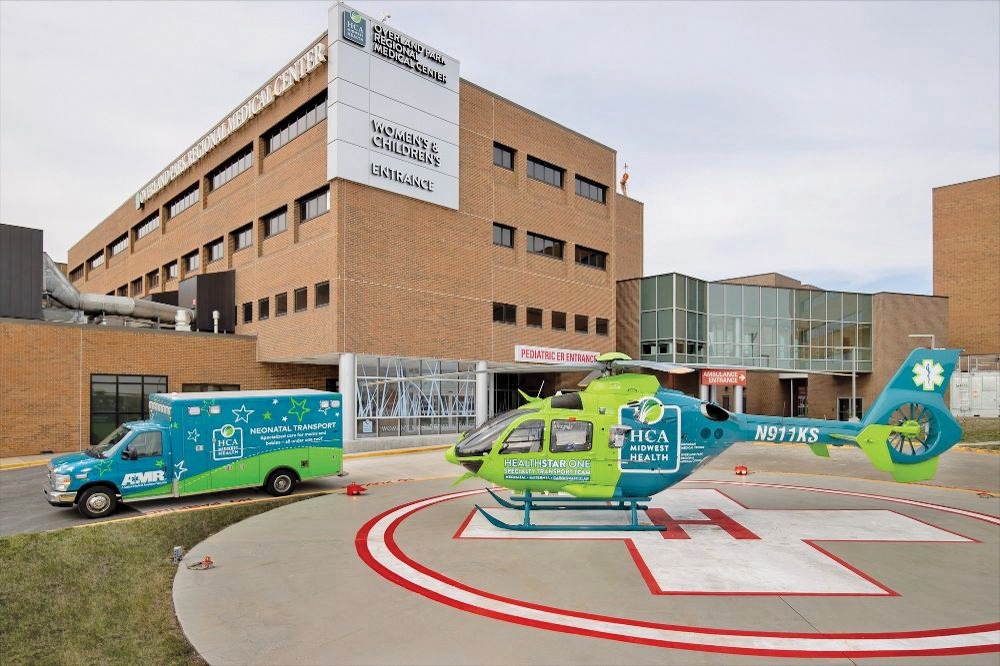
Advanced Critical Care in the Air
HealthStar One is Kansas City’s newest CAMTS-accredited Critical Care Air Medical Transport Team and Specialty Services. “Our crews all have ER/Advanced Critical Care-level training. And our aircraft is designed in every way to shave vital seconds off transporting a patient in crisis,” explained Raboin “It’s outfitted with its own stretcher system to eliminate the need to unload patients onto the hospital’s stretcher. And our cabin is large enough to add additional emergency personnel as needed, such as a high-risk OB nurse or a specialist physician.”
The HealthStar crew’s advanced training also includes medical and surgical procedures, and utilization of specialty cardiovascular intra-aortic balloon pump and impella pump, an onboard standard. These devices enable the crew to keep a patient alive if they’re suffering from cardiogenic shock events in which the heart alone can’t pump enough blood to meet the body’s oxygen demand.
What’s more, HealthStar is the only transport helicopter in the area to carry units of whole blood – the gold standard for trauma and hemorrhagic shock treatment.
“Our crews are certified to work with whole blood as a life-saving measure. This is trauma resuscitation at its best…we don’t just ‘stabilize’ as a band-aid until we reach the ER,” Raboin noted. “Our ability to provide rapid transfusion of whole blood begins onboard. We begin lifesaving trauma resuscitation on scene.”
“Our goal is to be the most innovative air medical provider in the area,” he added, “and to provide a level of service that gets patients the life-saving resources they need even before they reach the hospital.”
Help That Takes Flight in Minutes
HealthStar’s advanced emergency measures aren’t only in place aboard the aircraft. Back at their base in Overland Park, highly trained medical crews composed of a flight paramedic and a flight nurse are always on standby.
“The medical teams each work two 24-hour shifts a week, and they can launch and go anywhere within minutes of receiving an alert,” explained Raboin. “The aircraft is always stocked and ready to take off at a moment’s notice. Plus, because we’re stationed near the hospitals, we can pick up additional personnel from their air-trained emergency teams if they’re needed whether it’s for a transport from a home or accident scene, or from hospital to hospital.”
Raboin said that about 18% of HealthStar’s flights are scene calls and the rest are interfacility transport.
“Emergency alerts come through via a 911 dispatch,” he explained. “As an additional timesaver, hospitals are also connected to us through a rapid call system which acts as an early activator for our team. When an emergency calls for an aircraft, the crew on call immediately goes into pre-flight posture. They grab what they need, lift off and head to location.” Added Raboin, “All we need to take off is the heading, distance, and landing zone command. We can get the rest of the details once we’re airborne.”
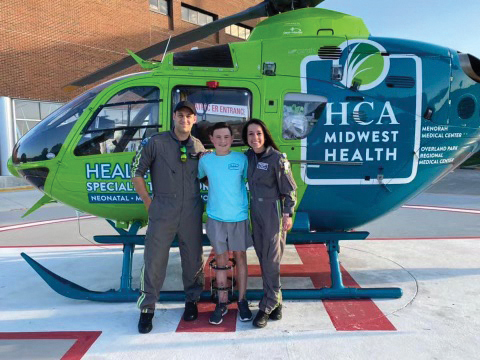 ER Level Medical Transport is the Future
ER Level Medical Transport is the Future
Raboin wants every provider in Kansas City and points west to know that HealthStar One is ready to treat and quickly transport their sickest patients.
“I want providers, and also patients, to realize it makes good sense to utilize aircraft for short-distance transports especially to reduce out-of-hospital times with critical patients,” he urged.
What’s more, from the sky, HealthStar One can fly to any hospital with a helipad or landing zone, so it’s easy to transport patients in life-threatening conditions to the nearest hospital offering the highest level of care.
“Our goal is to put the right team in the right place with the right mode of transport to get the right care,” declared Raboin. “We’re here 24/7 for the medical community and for critically ill patients.”
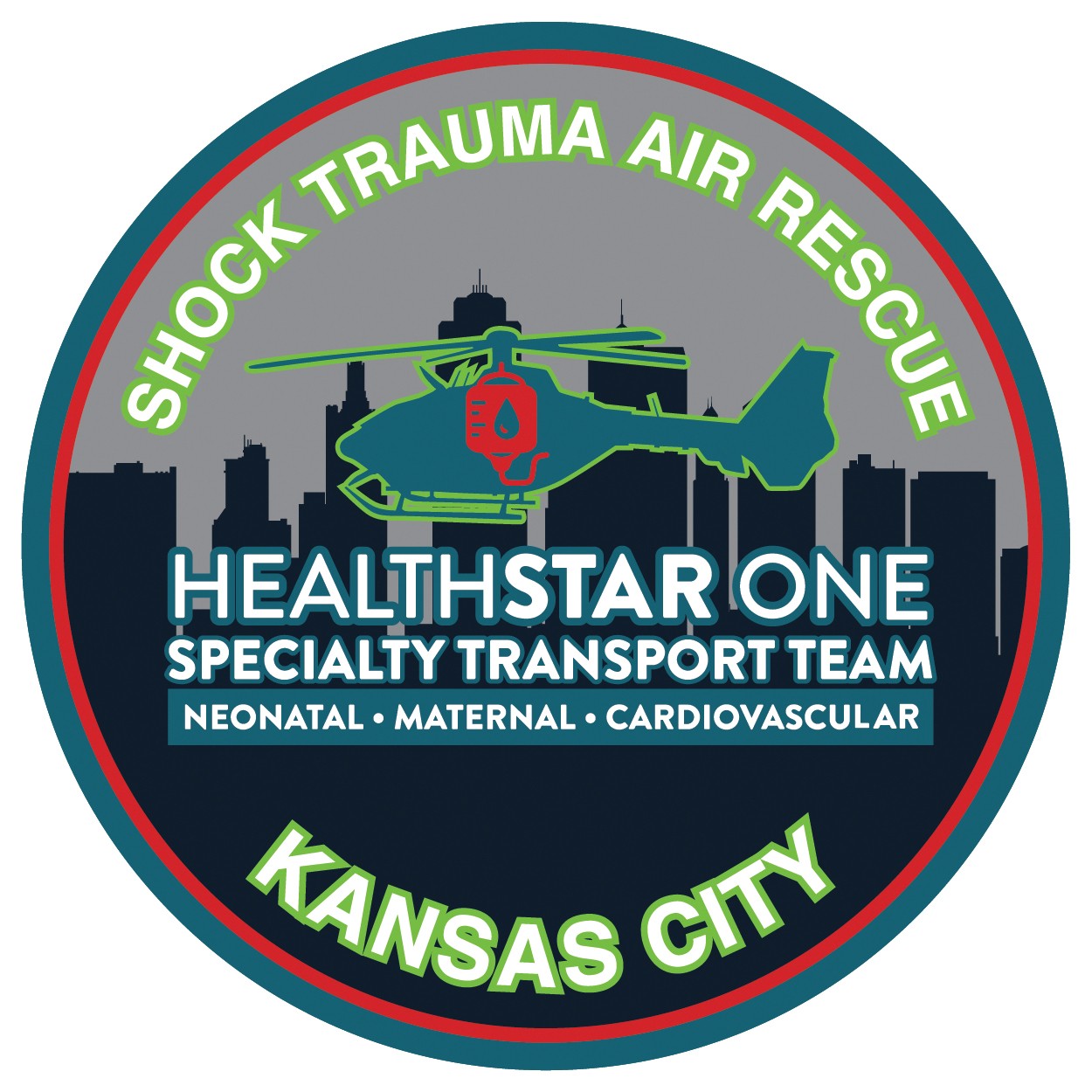
![]()
